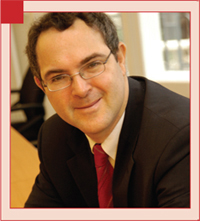
An Executive Interview with Pierre Fersztand, Global Head of Cash Management, BNP Paribas
What reasons do we have to be optimistic about 2015?
 We are definitely seeing a more positive outlook amongst our customers. Treasurers have taken considerable steps to rationalise their cash management structures and processes, optimise liquidity and position their business for growth both in their home regions and overseas, which is contributing to greater optimism about their ability to manage the inevitable uncertainty ahead. There are, of course, considerable differences in economic conditions in different parts of the world. Asia continues to grow strongly but steadily, there is a definite recovery in the US and the UK, but ongoing difficulties in the Eurozone will mean another flat year ahead. Over the past five to six years, however, company boards and the treasurers that support them have become accustomed to, and prepared for, economic diversity across regions, and have adapted and expanded their business strategies to take advantage of opportunities that exist in their home markets, but also those in faster-growing economies.
We are definitely seeing a more positive outlook amongst our customers. Treasurers have taken considerable steps to rationalise their cash management structures and processes, optimise liquidity and position their business for growth both in their home regions and overseas, which is contributing to greater optimism about their ability to manage the inevitable uncertainty ahead. There are, of course, considerable differences in economic conditions in different parts of the world. Asia continues to grow strongly but steadily, there is a definite recovery in the US and the UK, but ongoing difficulties in the Eurozone will mean another flat year ahead. Over the past five to six years, however, company boards and the treasurers that support them have become accustomed to, and prepared for, economic diversity across regions, and have adapted and expanded their business strategies to take advantage of opportunities that exist in their home markets, but also those in faster-growing economies.
In addition, it would be overly simplistic to assume that the economic headlines in each region reflect the experience of every corporation. With corporations of all sizes operating internationally, the world’s economies are connected more closely than ever before, and there are opportunities in every market. In Europe, with interest rates at an all-time low and high levels of liquidity, it is an excellent time to invest in growth, both to fund overseas expansion and prepare for recovery ahead.
Exactly a year has now passed since the SEPA end date. Where are we now, and what is your vision for SEPA 2.0?
SEPA is now ‘business as usual’ in Europe, and in a poll conducted amongst treasurers in October 2014 at the EuroFinance conference in Budapest, a large majority indicated that SEPA has improved their European payments processing. As BNP Paribas is present in every SEPA country, we were at the forefront of supporting customer migration and helping them to enhance their payments and cash management. A year on, with migration behind us, all industry players in Europe should be looking ahead at how we leverage the SEPA investment to create world-class processes. For example, we are proactively engaged in supporting customers to centralise their payments and collections. While most companies do so on a regional basis initially, SEPA has been instrumental in promoting the global XML ISO 20022 standards, enabling treasurers and finance managers to take a global view of payments and collections. While payment centralisation through payment factories or shared service centres is a more familiar concept, there are increasingly opportunities to establish collection factories. This is more challenging, partly due to the ongoing use of legacy payment instruments in some markets, but also for organisational and cultural reasons. However, the value proposition of collection centralisation is often compelling, particularly when complemented with solutions such as virtual accounts and automated reconcilations, solutions in which BNP Paribas has a proven track record and specialist expertise. We work closely with customers to understand potential internal and customer objections and structure solutions that help to overcome these concerns. By doing so, customers are able to improve credit analysis and monitoring, therefore managing counterparty risk more effectively. Days sales outstanding (DSO) and bad debts are reduced, while reconciliation and account posting is accelerated, allowing customer credit limits to be freed up more quickly. There is also considerable value to be derived by removing both internal and external costs, and improving control in the order-to-cash cycle.
Sign up for free to read the full article
Register Login with LinkedInAlready have an account?
Login
Download our Free Treasury App for mobile and tablet to read articles – no log in required.
Download Version Download Version




























